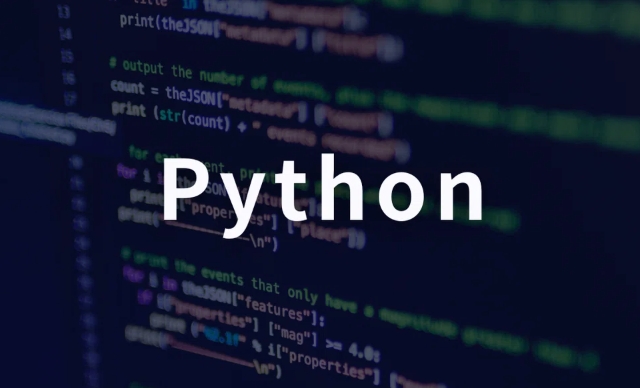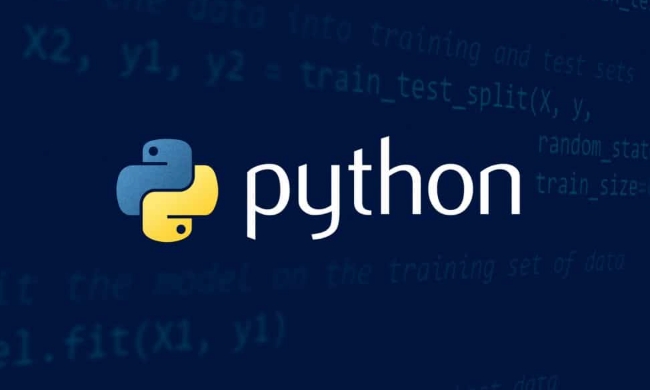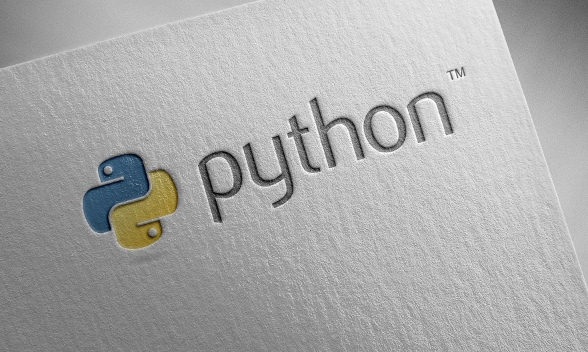To efficiently handle CSV files in Python, use the built-in csv module for simple tasks, process large files in chunks with Pandas, optimize I/O operations, and manage memory effectively. 1) Use the csv module for lightweight reading/writing without loading entire files into memory. 2) Use Pandas' chunksize parameter to process large datasets in manageable parts, applying operations like filtering or aggregation per chunk. 3) Specify data types with dtype to reduce memory usage. 4) Utilize compressed files (e.g., .gz) and avoid unnecessary type conversions to speed up I/O. 5) Write results in bulk rather than appending repeatedly. 6) Parallelize tasks using concurrent.futures or multiprocessing for multiple files.

When you're dealing with CSV files in Python, doing it efficiently can save you time and resources—especially when working with large datasets. The key is to use the right tools and techniques that minimize memory usage and processing time.

Use Built-in csv Module for Simple Tasks
For straightforward reading or writing of CSV files without heavy data manipulation, the built-in csv module is a solid choice. It’s lightweight and doesn’t require any external libraries.

Here’s how you can read a CSV file efficiently:
import csv
with open('data.csv', newline='') as csvfile:
reader = csv.DictReader(csvfile)
for row in reader:
print(row['name'], row['age'])This approach reads one line at a time, so it's memory-efficient. If all you need is to loop through rows and extract values, this method works well without loading the entire file into memory.

However, if your task involves filtering, sorting, or aggregating data, consider using Pandas instead.
Process Large Files in Chunks with Pandas
Pandas is powerful for handling structured data, but when working with very large CSVs, loading the entire dataset into memory might not be feasible.
To handle this, use the chunksize parameter in pandas.read_csv():
- This lets you process the file in manageable parts.
- Each chunk is a DataFrame, so you can apply operations like filtering, aggregation, or transformation before moving on to the next chunk.
Example:
import pandas as pd
total = 0
for chunk in pd.read_csv('big_data.csv', chunksize=10000):
total = chunk['sales'].sum()
print("Total sales:", total)This way, you’re only keeping 10,000 rows in memory at a time, which helps prevent memory overload while still allowing complex operations.
Also, make sure to specify the correct data types for each column using the dtype parameter. For example, using dtype={'user_id': 'int32'} can reduce memory consumption significantly compared to default types like int64.
Optimize I/O Operations
Reading from and writing to disk can be a bottleneck. Here are a few tips to speed things up:
Use compressed CSV files (like
.gz) — Pandas supports reading and writing directly to compressed formats without needing to decompress them first.pd.read_csv('data.csv.gz', compression='gzip')Avoid unnecessary conversions — If your CSV has consistent formatting, skip automatic type detection by setting
low_memory=Falseor declare column types manually.Write efficiently too — When outputting data, avoid appending to CSVs repeatedly. Instead, process and collect all results in memory first, then write once.
If you're dealing with multiple files, consider using concurrent.futures or multiprocessing to parallelize reading and processing tasks across CPU cores.
Efficiency boils down to choosing the right tool for the job and knowing how to manage memory and I/O. With these methods, you should be able to handle most CSV tasks smoothly.
The above is the detailed content of Efficiently Processing CSV Files with Python. For more information, please follow other related articles on the PHP Chinese website!

Hot AI Tools

Undress AI Tool
Undress images for free

Undresser.AI Undress
AI-powered app for creating realistic nude photos

AI Clothes Remover
Online AI tool for removing clothes from photos.

Clothoff.io
AI clothes remover

Video Face Swap
Swap faces in any video effortlessly with our completely free AI face swap tool!

Hot Article

Hot Tools

Notepad++7.3.1
Easy-to-use and free code editor

SublimeText3 Chinese version
Chinese version, very easy to use

Zend Studio 13.0.1
Powerful PHP integrated development environment

Dreamweaver CS6
Visual web development tools

SublimeText3 Mac version
God-level code editing software (SublimeText3)

Hot Topics
 What are some common security vulnerabilities in Python web applications (e.g., XSS, SQL injection) and how can they be mitigated?
Jun 10, 2025 am 12:13 AM
What are some common security vulnerabilities in Python web applications (e.g., XSS, SQL injection) and how can they be mitigated?
Jun 10, 2025 am 12:13 AM
Web application security needs to be paid attention to. Common vulnerabilities on Python websites include XSS, SQL injection, CSRF and file upload risks. For XSS, the template engine should be used to automatically escape, filter rich text HTML and set CSP policies; to prevent SQL injection, parameterized query or ORM framework, and verify user input; to prevent CSRF, CSRFTToken mechanism must be enabled and sensitive operations must be confirmed twice; file upload vulnerabilities must be used to restrict types, rename files, and prohibit execution permissions. Following the norms and using mature tools can effectively reduce risks, and safety needs continuous attention and testing.
 How does Python's unittest or pytest framework facilitate automated testing?
Jun 19, 2025 am 01:10 AM
How does Python's unittest or pytest framework facilitate automated testing?
Jun 19, 2025 am 01:10 AM
Python's unittest and pytest are two widely used testing frameworks that simplify the writing, organizing and running of automated tests. 1. Both support automatic discovery of test cases and provide a clear test structure: unittest defines tests by inheriting the TestCase class and starting with test\_; pytest is more concise, just need a function starting with test\_. 2. They all have built-in assertion support: unittest provides assertEqual, assertTrue and other methods, while pytest uses an enhanced assert statement to automatically display the failure details. 3. All have mechanisms for handling test preparation and cleaning: un
 How does Python handle mutable default arguments in functions, and why can this be problematic?
Jun 14, 2025 am 12:27 AM
How does Python handle mutable default arguments in functions, and why can this be problematic?
Jun 14, 2025 am 12:27 AM
Python's default parameters are only initialized once when defined. If mutable objects (such as lists or dictionaries) are used as default parameters, unexpected behavior may be caused. For example, when using an empty list as the default parameter, multiple calls to the function will reuse the same list instead of generating a new list each time. Problems caused by this behavior include: 1. Unexpected sharing of data between function calls; 2. The results of subsequent calls are affected by previous calls, increasing the difficulty of debugging; 3. It causes logical errors and is difficult to detect; 4. It is easy to confuse both novice and experienced developers. To avoid problems, the best practice is to set the default value to None and create a new object inside the function, such as using my_list=None instead of my_list=[] and initially in the function
 What are the considerations for deploying Python applications to production environments?
Jun 10, 2025 am 12:14 AM
What are the considerations for deploying Python applications to production environments?
Jun 10, 2025 am 12:14 AM
Deploying Python applications to production environments requires attention to stability, security and maintenance. First, use Gunicorn or uWSGI to replace the development server to support concurrent processing; second, cooperate with Nginx as a reverse proxy to improve performance; third, configure the number of processes according to the number of CPU cores to optimize resources; fourth, use a virtual environment to isolate dependencies and freeze versions to ensure consistency; fifth, enable detailed logs, integrate monitoring systems, and set up alarm mechanisms to facilitate operation and maintenance; sixth, avoid root permissions to run applications, close debugging information, and configure HTTPS to ensure security; finally, automatic deployment is achieved through CI/CD tools to reduce human errors.
 How can Python be integrated with other languages or systems in a microservices architecture?
Jun 14, 2025 am 12:25 AM
How can Python be integrated with other languages or systems in a microservices architecture?
Jun 14, 2025 am 12:25 AM
Python works well with other languages ??and systems in microservice architecture, the key is how each service runs independently and communicates effectively. 1. Using standard APIs and communication protocols (such as HTTP, REST, gRPC), Python builds APIs through frameworks such as Flask and FastAPI, and uses requests or httpx to call other language services; 2. Using message brokers (such as Kafka, RabbitMQ, Redis) to realize asynchronous communication, Python services can publish messages for other language consumers to process, improving system decoupling, scalability and fault tolerance; 3. Expand or embed other language runtimes (such as Jython) through C/C to achieve implementation
 How can Python be used for data analysis and manipulation with libraries like NumPy and Pandas?
Jun 19, 2025 am 01:04 AM
How can Python be used for data analysis and manipulation with libraries like NumPy and Pandas?
Jun 19, 2025 am 01:04 AM
PythonisidealfordataanalysisduetoNumPyandPandas.1)NumPyexcelsatnumericalcomputationswithfast,multi-dimensionalarraysandvectorizedoperationslikenp.sqrt().2)PandashandlesstructureddatawithSeriesandDataFrames,supportingtaskslikeloading,cleaning,filterin
 How can you implement custom iterators in Python using __iter__ and __next__?
Jun 19, 2025 am 01:12 AM
How can you implement custom iterators in Python using __iter__ and __next__?
Jun 19, 2025 am 01:12 AM
To implement a custom iterator, you need to define the __iter__ and __next__ methods in the class. ① The __iter__ method returns the iterator object itself, usually self, to be compatible with iterative environments such as for loops; ② The __next__ method controls the value of each iteration, returns the next element in the sequence, and when there are no more items, StopIteration exception should be thrown; ③ The status must be tracked correctly and the termination conditions must be set to avoid infinite loops; ④ Complex logic such as file line filtering, and pay attention to resource cleaning and memory management; ⑤ For simple logic, you can consider using the generator function yield instead, but you need to choose a suitable method based on the specific scenario.
 How do list, dictionary, and set comprehensions improve code readability and conciseness in Python?
Jun 14, 2025 am 12:31 AM
How do list, dictionary, and set comprehensions improve code readability and conciseness in Python?
Jun 14, 2025 am 12:31 AM
Python's list, dictionary and collection derivation improves code readability and writing efficiency through concise syntax. They are suitable for simplifying iteration and conversion operations, such as replacing multi-line loops with single-line code to implement element transformation or filtering. 1. List comprehensions such as [x2forxinrange(10)] can directly generate square sequences; 2. Dictionary comprehensions such as {x:x2forxinrange(5)} clearly express key-value mapping; 3. Conditional filtering such as [xforxinnumbersifx%2==0] makes the filtering logic more intuitive; 4. Complex conditions can also be embedded, such as combining multi-condition filtering or ternary expressions; but excessive nesting or side-effect operations should be avoided to avoid reducing maintainability. The rational use of derivation can reduce






